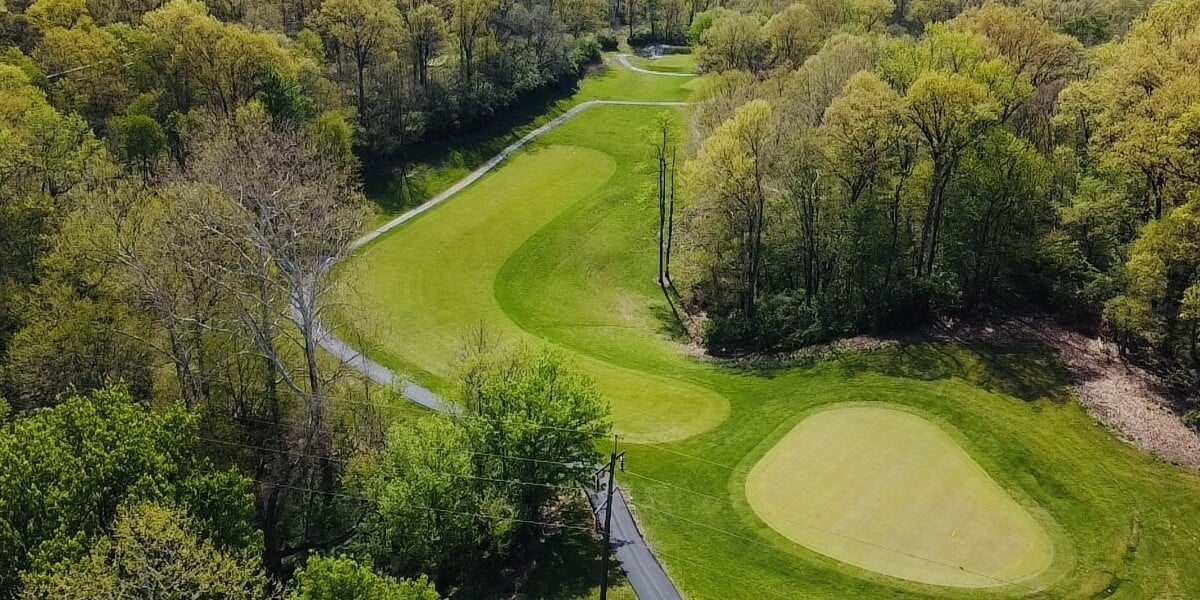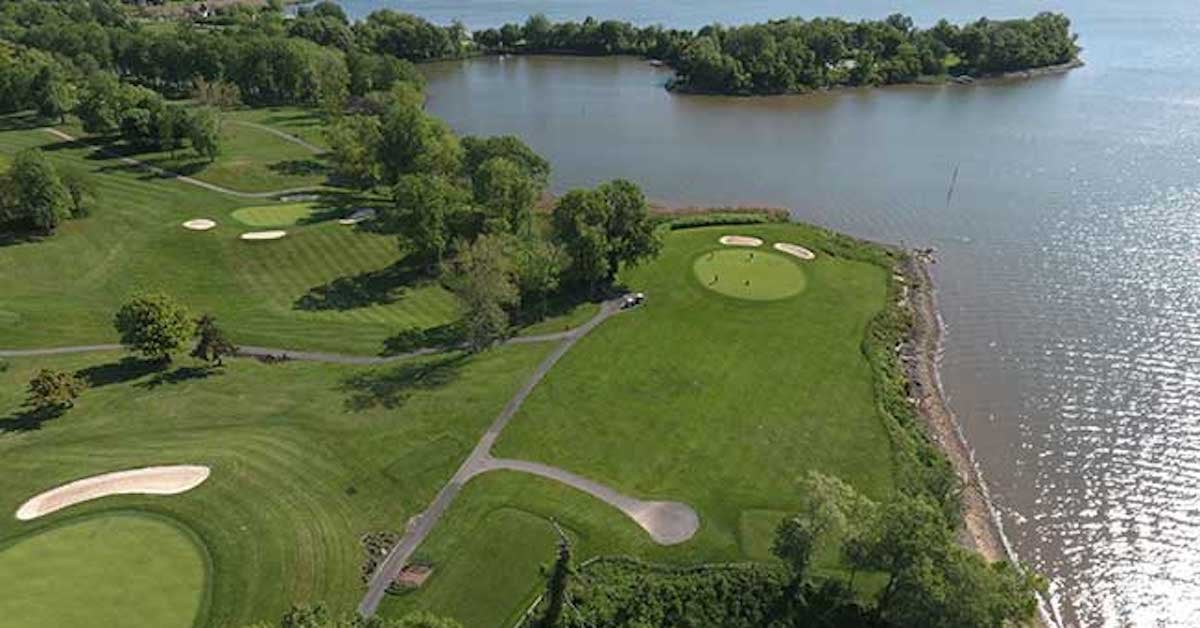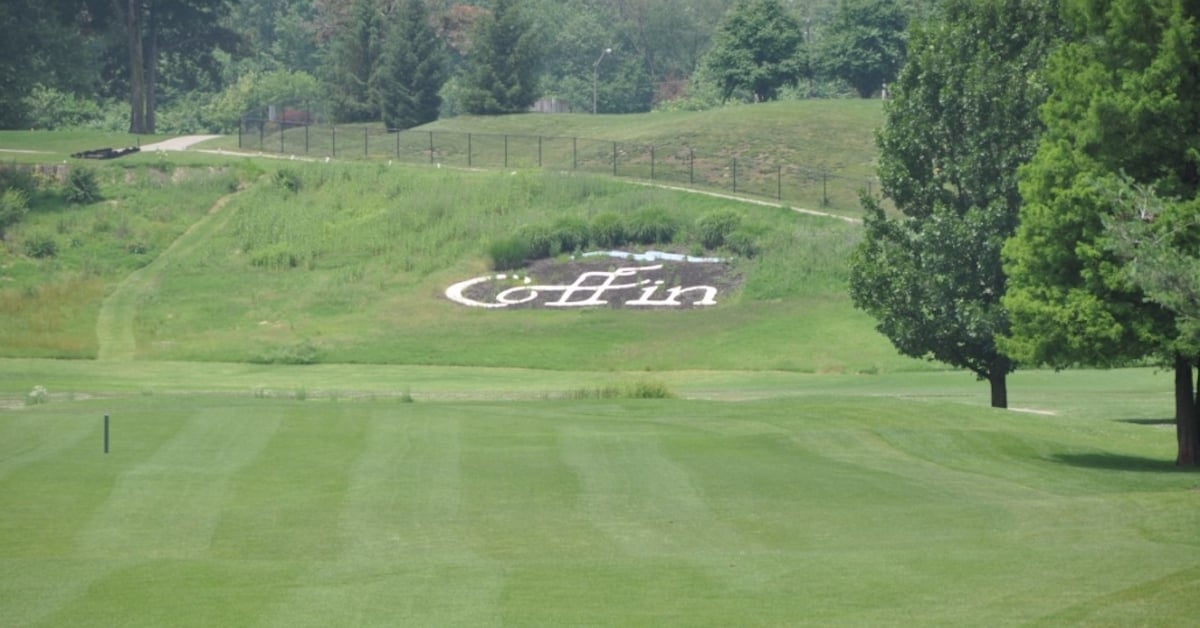
A city best known for growing peanuts proved it was no “goober” back in 1972 when architect Russell Breeden was hired to design the Suffolk, Virginia golf course. Five decades later, the layout remains one of the Tidewater area’s favorite green patches for those who don’t want to shell out big bucks to play a championship-caliber venue. In fact, with its moderate greens and cart fees, it may just be the best deal since the Louisiana Purchase.
Sleepy Hole Golf Course gained regional recognition as home of the LPGA Crestar Classic in the 1980s. But it was a dramatic playoff on Number 18 (more about that hole, later) in 1988 that put it into the national spotlight. Juli Inkster, Nancy Lopez, Rosie Jones and Betsy King — four of the biggest names on the LPGA TOUR at the time — engaged in an epic showdown with Inkster hitting what she described as a “career” 4-wood on her second shot to within 10 feet of the hole. She putted for eagle and won the tournament in sudden death.
It is an extremely fun track, one that smoothly blends easy and hard holes together like a perfectly made PBJ.
The LPGA event is a distant memory, now, but the golf course still hosts a number of high-profile amateur tournaments throughout the year. If anything, Sleepy Hole has only gotten better over the years, thanks in part to a well-earned rest for renovation in 2003 under the supervision of architect Tom Clark. In 2012, Sleepy Hole embarked on another major upgrade with the renovation of the Obici House. The classic California-style structure, located just a few yards from the 18th green and overlooking the Nansemond River, now houses the course’s pro shop, grille and events facilities and easily ranks as one of the most iconic clubhouses in the entire Mid-Atlantic region.
One can’t help but think of Augusta National’s famed Magnolia Lane when you pull into the entrance at Sleepy Hole. The narrow, half-mile road that leads to the clubhouse is bordered by holes 10-12 on one side and Nos. 5 and 13 on the other, with overhanging tree branches a harbinger to several of the wooded holes you’ll encounter later. When combined with the sight and ambiance of the regal Obici House, first-timers might think they’ve mistakenly arrived at a hoity-toity private club. Nothing could be further from the truth. Sleepy Hole is public golf at its very best, and J.T. Belcher, Director of Golf Operations, and his staff go out of their way to make players of all abilities feel welcomed and appreciated.
Sleepy hole’s layout has a classic feel to it. Relatively flat, the playable tree-lined fairways, beautiful landscaping, strategic ponds, and well-placed sand traps and bunkers take you back to a different era of golf course design — one that rewards good shots but does not overly penalize the occasional bad ones. Breeden elected to go with a nostalgic inner loop (front nine) and outer loop (back nine) design. The result is two sides that play very differently.
The front is played primarily through thick, tree-lined fairways. It is noticeably shorter than the back nine, and except for the two par 3s, every hole is a dogleg. Tee shots need to be worked both left and right, and you’ll need to “think your way around” to score well. But birdie opportunities do exist. Numbers 2 and 5 are reachable par 5s from the middle tees, and both par 3s play under 140 yards.
The short par-4 No. 6 can be quite contrary. The tee shot is played from a raised set of tees, between lines of trees, and over water to a diagonally cut landing area 180-200 yards out (aim just right of the 150-yard marker). Carry the shot too far and you risk running out of fairway and finding one of several mounded bunkers. The hole then turns sharply right at a 90-degree angle with the approach played over a creek bed to a well-guarded, elevated green.
The holes on the back nine are straighter and longer, playing significantly to the strengths of longer hitters. From the black tees way in back, the two par 5s stretch 501 and 604 yards and there are two par 4s that come in over 450 yards. To lessen the blow, most of the holes on the outer loop are more open and played in a parkland-style setting.
But enough, already. While the first 17 holes at Sleepy Hole each present their own unique challenges and rewards, the star attraction is far and away the 465-yard No. 18. Played as a par 5 when the LPGA TOUR was in town, it is now a par 4 and even from the middle and forward tees loses none of its difficulty or character. So much so that No. 18 is universally accepted as the toughest, most feared hole in Southeastern Virginia.
Number 18 begins with a slightly downhill tee shot over a grassy depression to a plateau fairway guarded on the left by marshlands. The target line is directly at the Obici House and a big drive can put your ball at the bottom of the hill. The approach is played over a thumb of the marsh to a semi-blind green that bumps right up against the Nansemond River. Two large sand traps and a small bail-out area to the right of the green are often the safest targets. This is one sleeping giant you don’t want to disturb.
No review of Sleepy Hole would be complete without mentioning the green complexes. Most are relatively small, elevated, and multi-tiered. And just about every one is well-bunkered. Keep that in mind when you decide which set of tees to play from, as you’ll want to attack your approaches with short irons and wedges in hand.
In a nutshell, Sleepy Hole offers golfers a championship-caliber round at just peanuts on the dollar. It is an extremely fun track, one that smoothly blends easy and hard holes together like a perfectly made PBJ. As an added incentive to play there, Sleepy Hole offers several attractive promotional offers to TeeTime Golf Pass members so you will want to stick it to the roof of your must-play list.
COURSE LOCATION:
Sleepy Hole Golf Course
4700 Sleepy Hole Rd, Suffolk, VA 23435





